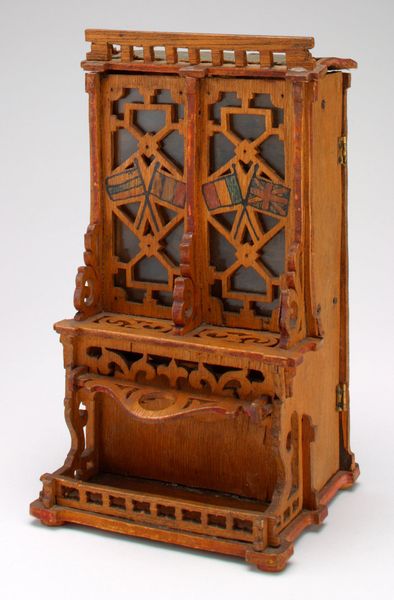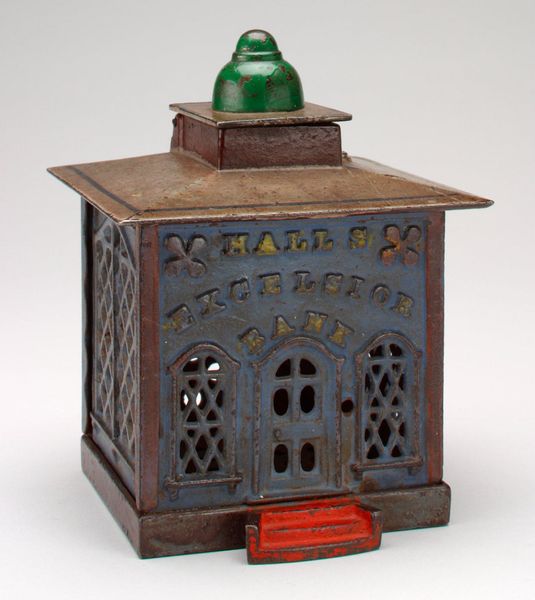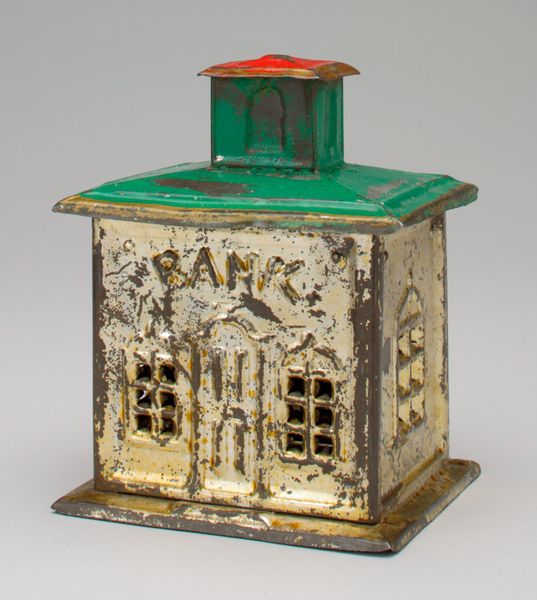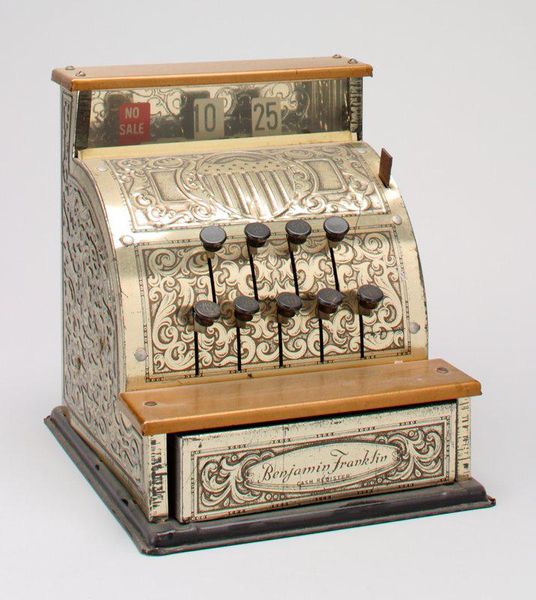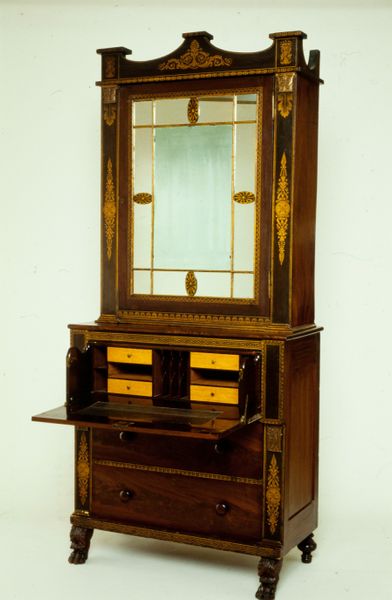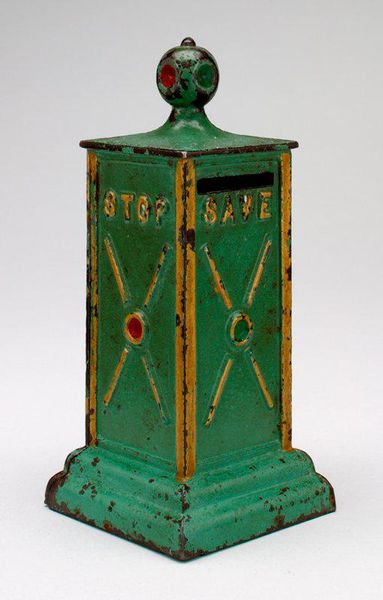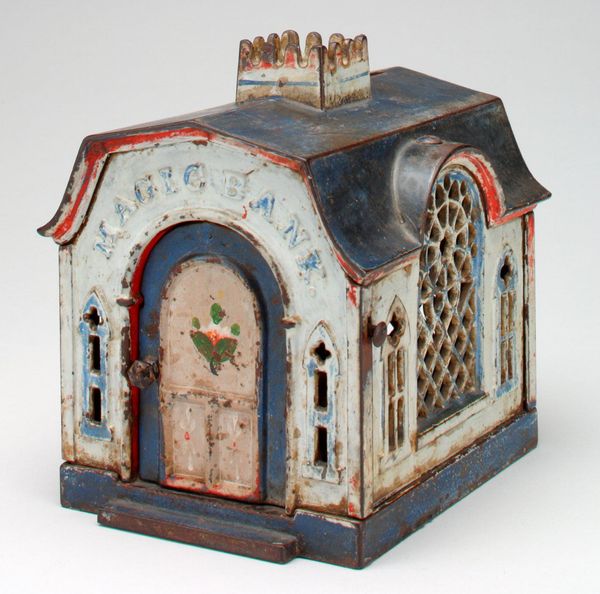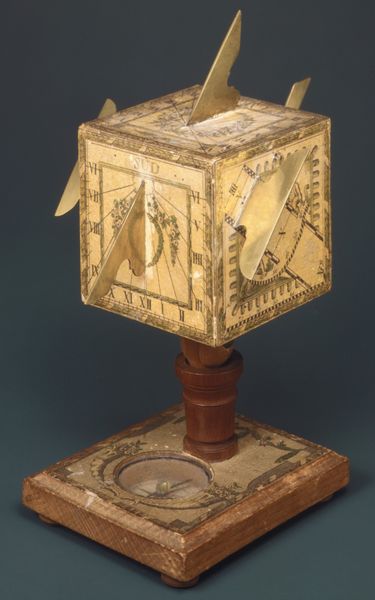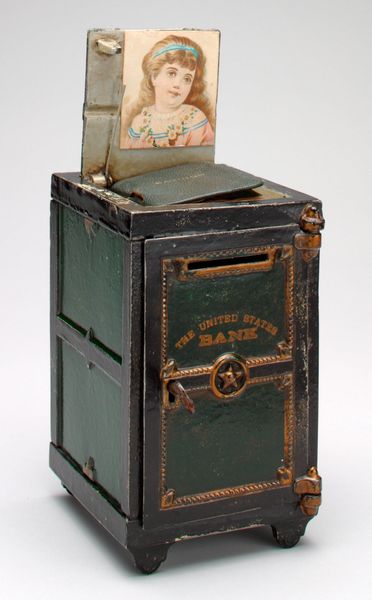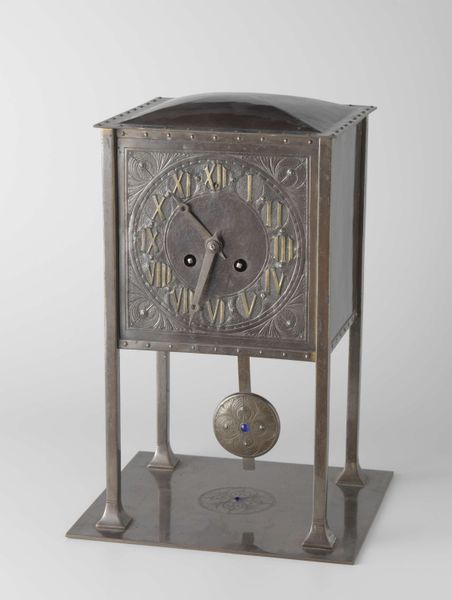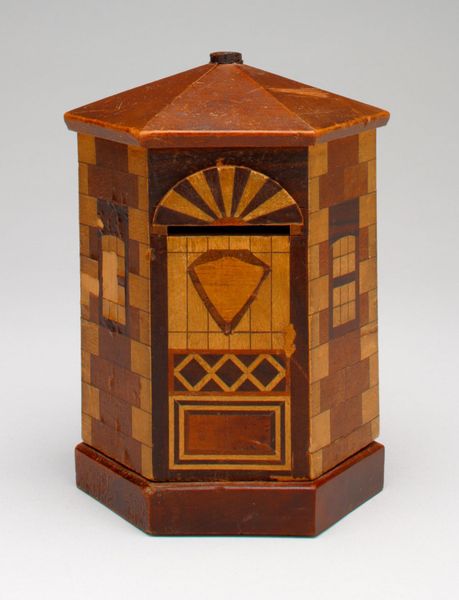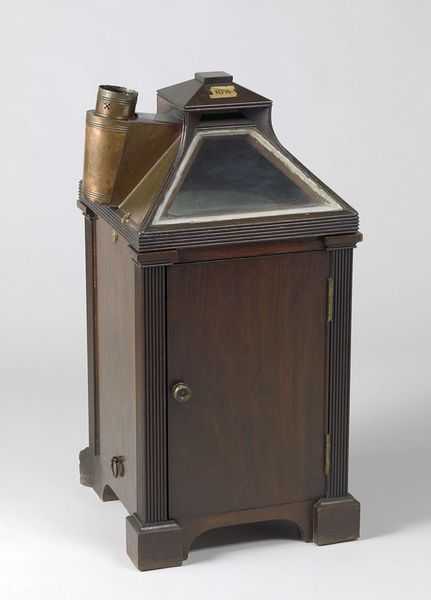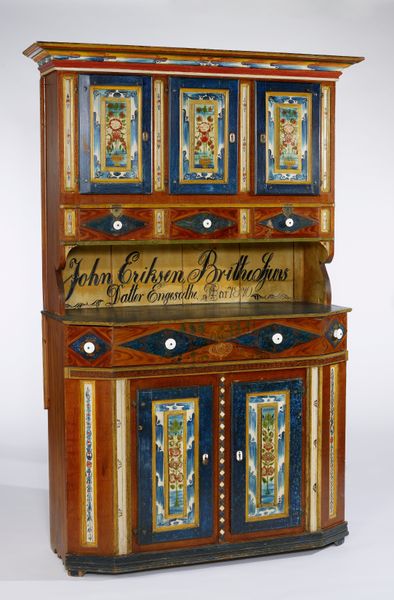
mixed-media, metal, glass
#
mixed-media
#
art-nouveau
#
metal
#
glass
#
decorative-art
Dimensions: 6 7/16 x 3 x 2 1/2 in. (16.35 x 7.62 x 6.35 cm)
Copyright: Public Domain
Curator: This is the Stollwerck coin-operated chocolate dispenser, dating from around the 1880s to 1890s, part of the decorative arts holdings here at the Minneapolis Institute of Art. It combines mixed-media, employing metal and glass within its Art Nouveau design. What’s your initial read? Editor: My immediate response is a bittersweet nostalgia. Its brightly colored façade tries to mask what, ultimately, is a transactional experience—a child exchanging money for a treat controlled by corporate capitalism, masked by whimsy and implied reward. Curator: Exactly. Stollwerck was a major German chocolate manufacturer, and this dispenser reflects the increasing commercialization of childhood. Notice the text, “Put one cent in the chimney and pull the handle.” It frames consumerism as a game, obscuring the very nature of capital. Editor: Right, it's all about manipulating desire. The figures represented in the illustration have always seemed deeply gendered, as though they're acting out some late 19th century social role under the auspices of buying treats. We’re talking here about children internalizing the expectations placed upon them by early advertisement. Curator: Certainly, consider how this mechanism operated within spaces such as train stations, arcades, even taverns; inserting the company literally into everyday public spaces. It becomes embedded within popular visual culture. And this Art Nouveau style? How does that function here, visually? Editor: The whiplash curves and naturalistic motifs contrast jarringly with the machinery within. It aestheticizes exploitation! The shiny metallic exterior creates an appealing sheen on what, viewed with contemporary lens, presents certain ethical problems relating to marketing and access, especially concerning young children in urban spaces. Curator: And we also mustn't overlook the very idea of such "leisure time" activities which may only have been experienced and indulged in within very specific social parameters. Editor: Precisely! A small purchase can lead to vast implications and that is what makes this such an important artefact. Thanks, I hadn’t thought of it quite like that before. Curator: The dispenser presents an interesting historical lens to see both social constructs and class barriers. Thanks, you too.
Comments
No comments
Be the first to comment and join the conversation on the ultimate creative platform.
